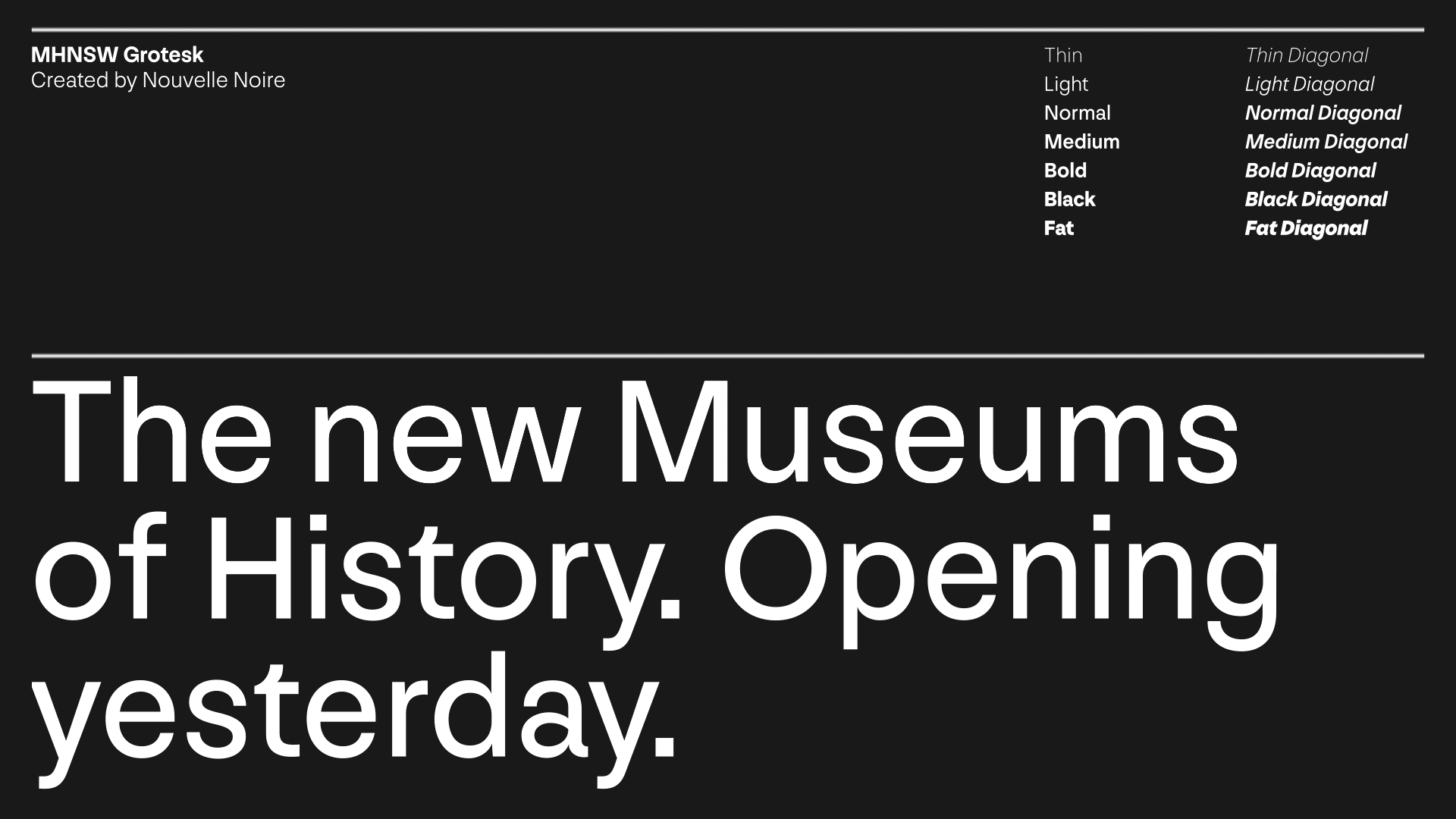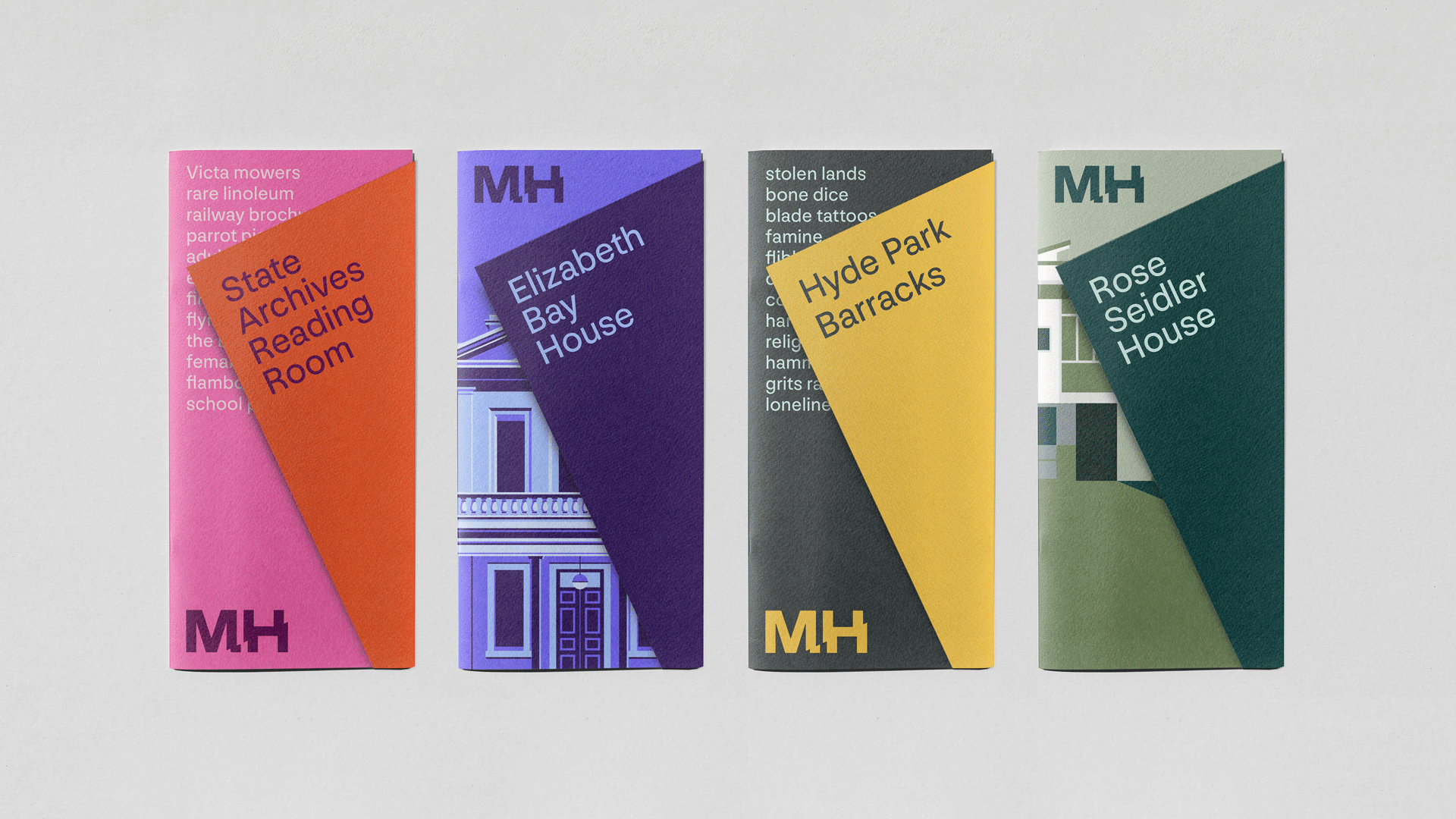Museums of History NSW
A new cultural institution
Museums of History NSW (MHNSW) is a new cultural institution comprising the former Sydney Living Museums, the NSW State Archives and the Government Records Repository. Home to one of the most extensive archival collections in the world, as well as the conservation, management and visitations experiences across 12 historic houses, gardens and museums, MHNSW is the primary custodian and advocate of NSW’s history.
From First Nations to future generations, visitors to organisations requiring records stored, the institution invites audiences to discover new perspectives of the past by challenging our preconceived notions of history — showing how museums are a gateway to our futures.
Time is Relative
History has a problem. It’s often seen as boring, academic, dusty and, well, dated, focused on things forgotten and no longer relevant to today — let alone any relevance to the future.
The problem isn’t with history — the problem is with how we share and experience history. As the custodians of NSW’s history, it’s MHNSW’s role to disrupt these prejudices and show history as a living, vibrant organism — not just of the past, but a shaper of the present and a marker for our futures.
The Western view of history is backward looking. This isn’t the case for many cultures — especially that of Australia’s First Nations peoples. As the oldest surviving culture in the world, they have continually shared the history of this land through their own storytelling and community. For Indigenous peoples (and other cultures) history is fluid, a living part of the present, deeply intertwined with culture and identity.
This thinking inevitably led to the brand’s core idea: The Future of History.
As the pre-eminent body for NSW cultural history, MHNSW audaciously embraces these perspectives to provide us with a fresh and truer approach to challenging expectations about Australia’s museum culture and how we champion the importance of history.
Acknowledging this was the key to unlocking the foundations of the brand.
A Living History
Merging three distinctly different entities into one institution, brings with it inherent challenges. Balancing the requirements and working cultures of these existing entities meant designing an identity that catered practically to the needs of each organisation — whilst simultaneously delivering a broad and engaging range of content that constructively subverted people’s expectations to help them rethink their relationship with history, and develop their understanding of MHNSW.
The identity is bound by time’s relativity and contextuality. The new logo is a splintering in time, caught in a layer. The design system builds on this fluctuating angle to provide maximum flexibility paired with accessible typography.
The past is not yet written
The multi-faceted and multi-dimensional view of history opens up a world of storytelling opportunities.
As there are many ways we can perceive time, this allows MHNSW to approach history from multiple angles, retell an event from a different perspective, or rethink the timeline entirely. For example, if history is layered, messages can be made up of layers. These layers can take on juxtaposing forms, or they compound to tell a complete history.
Not only does this approach allow MHNSW to tell a more complete story of a place, person or thing, bringing interesting new insights into locations and experiences, it will also encourage audiences to share their own interactions with history and bring them into MHNSW. Doing so will help audiences understand the enduring relevance of history and challenge the belief the past has already been written.
The Future of History
As the new brand rolls out across existing and future sites, the inaugural program will continue to attract visitors to engage with the Future of History. There will also be an ongoing emphasis on sharing and encouraging new perspectives and voices of First Nations peoples. A dedicated First Nations Cultural Space will soon be established on the site of Australia’s first Government House — a significant site to many Indigenous people.
The launch of the brand also coincided with the launch of MHNSW’s first campaign: ‘History, Not As You Know It’.
Credits
For The People
Executive Creative Director – Mel Baillache, Jason Little, Jo Roca
Creative Director – Alexis Waller
Design Director – Floriane Jambu
Designer – Atsaya Gabiryalpillai, Emma Turney, Dash O’Brien-Georgeson, Georgia Urie, Joseph Dennis, Tom Clayton
Head of Strategy – Damian Borchok, James Cooper
Senior Strategist – Claudia Henderson
Head of Storytelling – Mat Groom
Storyteller – Daniel St Vincent, Amy Scott
Account Handlers – Alice Marrows, Monique Tadrous
Motion – Mac Archibald, Atsaya Gabiryalpillai, Emma Turney
Illustrator – Dash O’Brien-Georgeson
Client Name
Chief Executive Officer – Adam Lindsay Director, Commercial Services – Ben Alexander Director, Collections – Martyn Killion
Director, Programming, Production & Audience – Rebecca Bushby
Head, Audience & Marketing. Programming, Production & Audience – Karen Rivera
Graphic Design Manager – Ayumi Moritoki
Typefaces
MHNSW Grotesk – Nouvelle Noire























